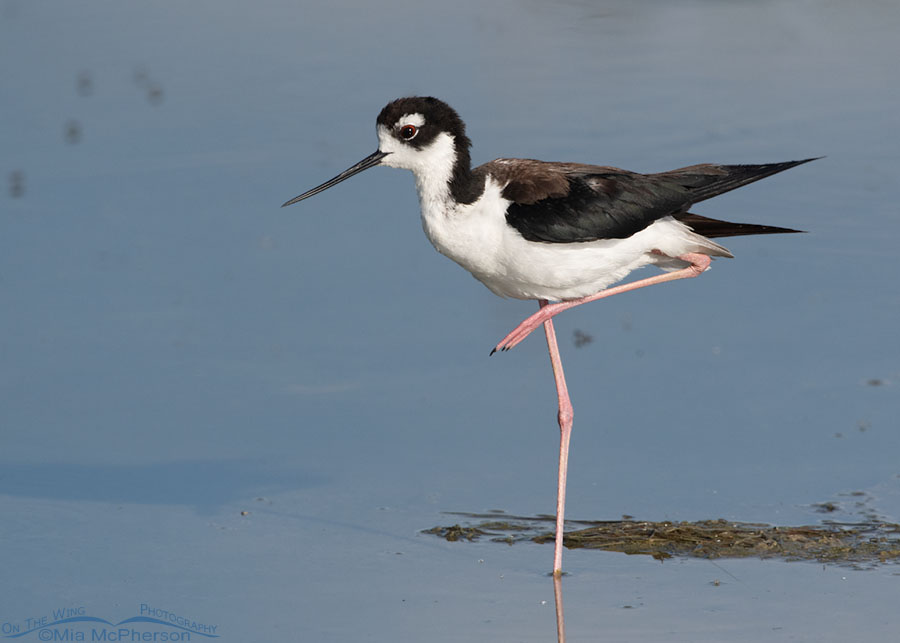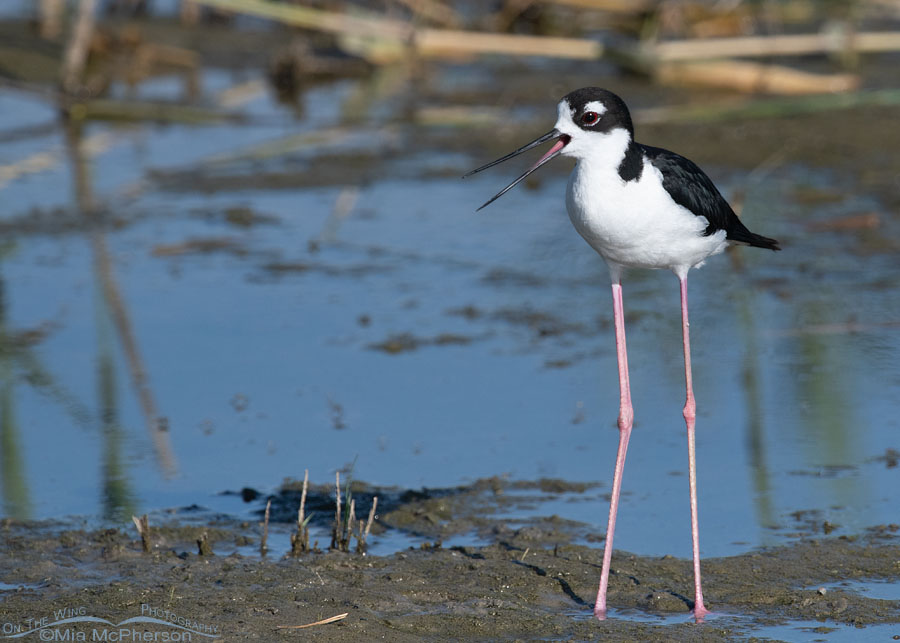 Resting female Black-necked Stilt – Nikon D500, f7.1, 1/2500, ISO 500, -0.3 EV, Nikkor 500mm VR with 1.4x TC, natural light
Resting female Black-necked Stilt – Nikon D500, f7.1, 1/2500, ISO 500, -0.3 EV, Nikkor 500mm VR with 1.4x TC, natural light
These two Black-necked Stilt photos were taken 9 days ago at Bear River Migratory Bird Refuge and I thought they could easily show the difference between the female and male of this species. First though, these stilts were not near each other and it is probably safe to presume they were not a mated pair.
The photo above shows a female Black-necked Stilt resting in the shallow waters of the marsh near the auto tour route. So how do I know that this is an adult female?
I know that she is a female by the dark brown feathers she shows on her back.
(Full disclosure – I did remove some out of focus midges in this photo during post processing)
 Male Black-necked Stilt calling near his chick – Nikon D500, f7.1, 1/2500, ISO 500, -0.3 EV, Nikkor 500mm VR with 1.4x TC, natural light
Male Black-necked Stilt calling near his chick – Nikon D500, f7.1, 1/2500, ISO 500, -0.3 EV, Nikkor 500mm VR with 1.4x TC, natural light
Adult males do not have brown feathers on their backs, they have jet black feathers on their backs without a trace of brown. It is as simple as that.
Life is good.
Mia
Click here to see more of my Black-necked Stilt photos plus facts and information about this species.


Really interesting narrative and I love how you captured the contrasts between the Stilts and the marsh. Thanks Mia.
Well thank-you, I learned one more thing today.
I wonder why they need such long legs?
Thank you.
Thank you for more interesting info on these birds. The female seems to be harnessing her inner Flamingo and the shot of the male definitely shows why they’re called Stilts. Wow, are those long legs!
So appreciate the facts you share! And….a stilt can live up to 19 years…amazing!
I’ve seen many black-necked stilts and never knew how to distinguish between male and female. Thanks for the explanation.
Thanks Mia, beautiful shots!
Are the dark smudges top left of the first shot more midges?
Thanks for male female explanation and for full disclosure, much appreciated.
Dick, thanks. They are beautiful birds. Those dark smudges are out of focus midges, the ones I removed that were close to the stilt’s head and bill I felt were a distraction, the ones in the water further away, not so much.
Thank you for explaining the difference between the male and female Black-necked Stilts. When I first saw the photos, I wondered how you could tell the difference. Of course, that’s the problem with looking before reading. Beautiful birds.
Thanks Liz!